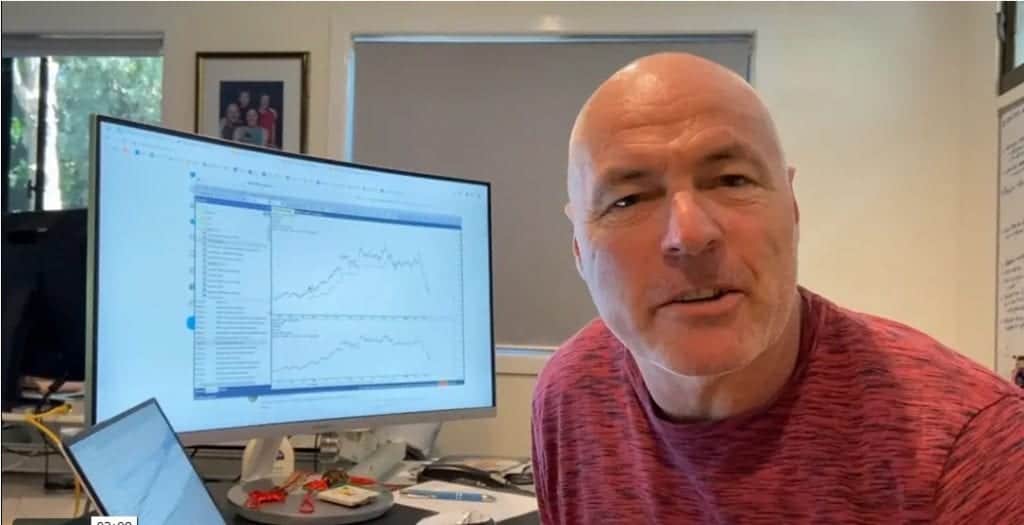
The Signal and the Noise
This article is slightly on the technical side, but it’s an important read if you’re looking to go it alone when trend trading. I received an email from a reader in the US who had purchased the Weekend Trend Trader eBook. After doing a few trades he wrote saying he’d lost $638 and asked if he was following the rules correctly. After examining his trades using our Turnkey Code the answer was an emphatic “no”. Rather than showing a loss of $638 he should have been showing a profit of $3359, and based on the small sample of trades this was a considerable difference. So what happened?
The Answer
The answer is actually quite common. This client was using an exploration or scan to find the specific entry criteria, which may seem the obvious thing to do, but it’s incorrect. Here’s why.
A scan will identify the criteria that you have programmed regardless of where that criteria has occurred. Let’s use the following Telstra (TLS) chart that trends from $2.75 to $5.75 as an example. Let’s overlay a simple Bollinger Band system (blue lines/bands) whereby we enter long when the upper band is penetrated and exit when the lower band is penetrated.
A scan will look for each time the criteria is met, specifically a breach of the upper band – shown with the blue arrows. In this example the criteria is met at $3.00, $3.20, $3.45, $4.05, $4.50, $5.25 and $5.50, so a scan will generate a signal at each level. If you started watching that stock when the price was at $5.30 then you would have entered the trade the next time the criteria was met, in this case at $5.50.
Trading Strategy
However, a full trading strategy, as per the Turnkey Code, will track the actual position not the criteria being met. Therefore, in the example above, the one and only signal was the first time the upper band was breached – at $3.00 annotated with the red arrow the turnkey code will not signal any more positions in that stock until the existing position has been exited and the criteria is met once again.
Remember, all trends start and end at some stage. You want to capture that trend as near as possible to the start. The longer you wait to enter, the more likely you are buying toward the end. Looking at the chart above, where would you like to enter?


